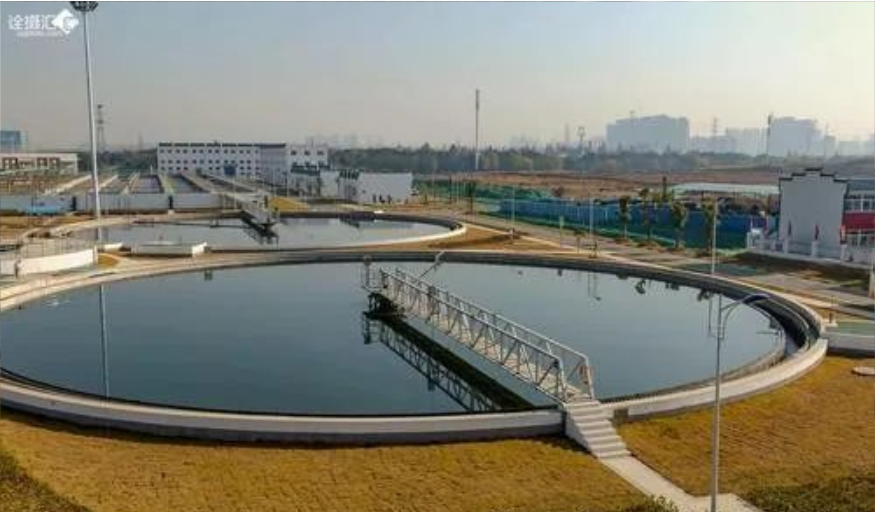Consultation hotline:
(+86)0532-88988868
(+86)0532-88988868
As the main place of urban sewage treatment, sewage treatment plants often face problems in all aspects of sewage treatment process, equipment, etc., how to solve these specific problems, this paper briefly summarizes the 13 major problems faced by sewage treatment plants in the actual work process.
1. In the CAST process, the mixed liquid after sludge dewatering is directly discharged into the inlet pump room, which leads to high COD and SS in the inlet water, and affects the denitrification reaction of the selection tank (because the pre-explosion gas grit tank has degraded part of the C source), how to solve it?
This is a problem that is generally ignored in sewage treatment plants, that is, the impact of the dewatered sludge filtrate on the biochemical treatment after returning to the biochemical tank. Because the sludge should be added before dewatering, such as PAC and PAM, some agents have certain toxicity, and the sludge can be refluxed to the biochemical reaction tank with the filtrate during dewatering. If the appropriate sludge conditioning agent is selected, and the dosage and the amount of sludge inlet of the dehydrator are controlled, it will not have a big impact on the previous biochemical treatment. Again, it is emphasized that the sludge dewatering effect depends on the whole process management of the sludge treatment process, including the management of the sludge thickening tank.
2. How is the "sludge age" determined? How to control it? Is it determined by the amount of sludge discharged, or is it used to determine the amount of sludge discharged?
Muddy age, F/M, etc. are not so much control parameters for operation as for design, and are only reference parameters in process control. In actual operation, the sludge discharge is usually controlled according to the MLSS value plus experience, and the SV30 can also be used as a reference when the SVI is relatively stable.
3. Our factory uses the Carocel oxidation ditch process. Sometimes the ammonia nitrogen in the effluent of the device is higher than that of the inlet water, the inlet water TP is about 2.5mg/L, the effluent is only about 0.2, and the 3 aerators are running at full capacity. I haven't been able to find out what the reason is, what's going on?
Only according to the information you provide a preliminary analysis, it may be that the sewage contains more nitrogen-containing organic matter, the reaction time is not enough, the ammoniation rate of organic nitrogen is greater than the nitrification rate of ammonia nitrogen, in addition, it may also be that there is not enough phosphorus, which affects the effect of ammonia nitrogen removal through the assimilation pathway.
4. In the process of operation, there is a thick layer of sludge accumulation on the surface of the oxidation ditch, and the sludge particles with a particle size of about 1mm are yellow, which often causes a large amount of floating sludge in the secondary sedimentation tank, the sludge returns to white, and the floc flows out with the effluent, and the SV30 declines rapidly, the treatment effect is lost, and the accumulated sludge is thinned and eliminated. Repeat the cycle and ask about the causes and control measures.
This indicates that the sludge has lost its activity, which increases ESS. There are two possibilities: one is the self-oxidation of the sludge; The second is sludge poisoning. Judging from the phenomenon you described, the former is more likely, and the specific oxygen consumption rate, that is, the ratio of the endogenous oxygen consumption rate to the matrix oxygen consumption rate, can be determined, and targeted measures can be taken.
5. How is Section A of AB Law controlled? Is it continuous reflux from the secondary sedimentation tank to section A at the same flow rate? How much SV30 should be controlled? Is it 5%-10%?
The reflux ratio of section A should be larger, but the residence time of sludge in a sedimentation tank is too short, although section A is mainly adsorption-based, but there is also a certain biodegradation effect, biodegradation is mostly carried out in the sedimentation tank, only the organic matter adsorbed on the surface of the sludge is degraded, in order to restore the adsorption capacity. It should be controlled by MLSS, and SV30 can also be used when the sludge sedimentation performance is stable, and the sedimentation ratio of 5%-10% is too low according to the actual situation.
6. If a sewage treatment plant has not achieved a satisfactory treatment effect after one or two years of operation, should it be considered to re-cultivate (sludge re-cultivation)?
No need to change! If the operating conditions remain the same, it will be the same if you change it, even if you use the dominant strains to add it is useless, it can only be maintained for a period of time, it is important to control the operating conditions, if it is a design problem to rectify in time.
7. I debug industrial wastewater. The process is hydrolysis + anaerobic + aerobic pool 1 + aerobic pool 2 + precipitation. Due to installation problems, the distribution of the aeration tank is uneven (circular aeration head aeration), and at each aerator, there is a similar fountain tumbling up and down (about 1m in diameter), and the aeration is uneven, how much impact does it have on the treatment effect? It was also found that there was less packing film in the aeration area, there were large metazoans in the microscopic examination, no other organisms were found, the surface of the packing biofilm was pale yellow, and the biofilm outside the aeration area was up to 3cm thick, can you explain it to me?
The situation you are talking about cannot be said to be uneven aeration, it is normal. And you said that there are not many biofilms, I don't know how much? If the biofilm basically covers the filler, it is very good, as for the biofilm outside the aeration area up to 3cm thick is serious balling, measures should be taken, such as atmospheric scouring and anaerobic defilming.
8. Q: What is the following example question about the contact oxidation tank?
(1) How long can the sludge survive on the filler when the contact oxidation tank is empty?
(2) When the treatment capacity of the oxidation tank is reduced, should nutrients be added?
(3) For foam, do you think it is effective to add kerosene to defoam, and if it is effective, how much should you usually add?
The answer to the three questions is as follows:
(1) After the contact oxidation pond is emptied, it is not a question of how long the biofilm sludge can survive, but to avoid the soft filler drying and compaction, and it is difficult to stretch out in the water after compaction, so as to prevent such a situation;
(2) The decline of the treatment capacity of the contact oxidation pond should be considered from multiple factors, among which the thickness control of the biofilm is very important, the film is too thick will seriously affect the treatment capacity, and it should be noted that the pool can only be released slowly when emptying, otherwise the soft packing rack with a large amount of biofilm will collapse or deform;
(3) Chemical foam is more effective to spray with water (not directly flushed with water), I do not agree with kerosene and other methods of defoaming.
9. The average data of the inlet, outlet and biochemical tank of our factory in the past week are as follows:
Water intake: BOD: 253, COD: 810, pH: 7.9, SS: 286, chromaticity: 32 times, ammonia nitrogen: 28, total nitrogen: 64, total phosphorus: 6.0;
Effluent: BOD: 4.8, COD: 74, PH: 8.1, SS: 12, Color: 8 times, Ammonia Nitrogen: 7.6, Total Nitrogen: 22.8, Total Phosphorus: 1.02; Biochemical tank: MLSS: 4200, MLVSS: 2340, SV%: 47.2, sludge index: 118.9, mud age is 35 days.
The improved activated sludge treatment process is adopted, and the current influent water is only about 25,000 tons/day (designed to be 50,000 tons), more than 80% of which is industrial wastewater, and a small amount of high-concentration landfill leachate. The process flow is aeration grit remover - post-biochemical tank - post-secondary sedimentation tank, and there is no contact tank and hydrolysis tank. The biochemical tank is supplied by a blower and aerated by a deep-water rotary dish, and the dissolved oxygen does not reach 1mg/L when the water is continuously inlet, and the dissolved oxygen slowly rises to about 4-5mg/L after the water intake is stopped. The serious excess of the influent water and the defects of the structure led to a high load on the biochemical tank, and the sludge thickening tank was very small (180 cubic meters), and a considerable part of the remaining sludge returned
The problem now is:
(1) Activated sludge suspended particles are often found in the secondary sedimentation tank after water intake, is the static sedimentation time insufficient or difficult to precipitate?
(2) Bloodworms (Daphnia) were found in the three secondary sedimentation tanks, and Daphnia seemed to be a sign of good water quality, was it because of the high concentration of sludge that led to a large number of reproduction?
(3) Sometimes a thin layer of floating mud is found in the secondary sedimentation tank, is it that the sedimentation performance of the sludge is very poor, and the aeration of the biochemical tank is insufficient? Or is the sludge backflow not timely?
(4) It is easy to breed moss or algae on the triangular weir plate of the secondary sedimentation tank, what is the way to overcome it?
(5) I think that the sludge has aged seriously, and it is necessary to control the MLSS to between 3000-3500 or lower, increase the remaining sludge discharge, and reduce the sludge age, so that the impact resistance of the biochemical tank will decrease? Will the effluent quality improve?
The sludge is somewhat aged, but not very serious, the sludge age has reached 35 days, according to this calculation, the sludge load is less than 0.03. It is sufficient to control 2/3 of the current sludge concentration, the sludge concentration should be gradually reduced, Daphnia have no effect on the effluent, and Daphnia should not be taken during analysis and sampling. It is also necessary to pay attention to the control of the mud layer of the sedimentation tank, and the moss and algae on the triangular weir plate of the secondary sedimentation tank can only be removed manually.
10. We are a two-stage biochemical treatment of petrochemical wastewater, the first stage is a circular complete mixed aeration tank, the second stage is a push-flow aeration tank, the first stage is DO0.2mg/L, the second stage is DO5.0mg/L. During this period, the PH of the primary biochemical inlet water was 8.0, the effluent was 6.5, and the PH of the secondary biochemical was 5.78, which exceeded the range of indicators 6-9, what happened?
It is normal for the primary DO to be low because of the high sludge load, the primary pH drop may be due to acidification due to the high load, and the pH drop of the secondary effluent may be caused by the alkalinity consumption by the nitrification reaction. Because you introduced it too simply, I can only briefly analyze and extrapolate.
11. In addition to sufficient carbon and sludge age and sufficient reflux to ensure the removal of ammonia nitrogen, is the reflux reflux of the effluent of the aerobic tank or the reflux of the bottom of the secondary sedimentation tank? I am now debugging spandex wastewater, the original design of the reflux aerobic pool effluent, but in fact, if the reflux rate is doubled, it can not ensure the anaerobic environment of the anoxic pool in front, my master said that the dissolved oxygen in the aerobic pool will be better controlled at about 1mg/L, is this right?
According to your introduction, it should be pre-denitrification, and the effluent of the aerobic tank and the sludge of the secondary sedimentation tank need to be reflowed. If you say that if the return flow rate is doubled, you can't guarantee the anaerobic environment of the anoxic pool in front of it, and the anoxic zone is not equal to anaerobic, and the DO is less than 0.5mg/L. Your master said that the dissolved oxygen in the aerobic pool is controlled at about 1mg/L, which can prevent the DO in the hypoxic area from being greater than 0.5mg/L. If the DO in the aerobic zone is about 1, when the effluent return flow is doubled, and the DO in the anoxic zone is still greater than 0.5mg/L, the dissolved oxygen in the aerobic zone can not be reduced, and the effluent reflux can not be reduced at will (the nitrate nitrogen entering the anoxic zone will be less), at this time, the sludge output of the secondary sedimentation tank can be reduced without affecting the mud water separation effect of the secondary sedimentation tank, and the sludge layer in the tank will be raised, so that the sludge residence time in the secondary sedimentation tank will be increased

12. Recently, the workshop was tested, resulting in abnormal water ingress. Yesterday the COD had 6000 and the design only 600. What measures should be taken to bring the effluent back to normal as soon as possible? (2) Recently, the air pressure in the air compressor room was 8 kg, and there was no pressure reducing valve, and they explained that the flow valve of the aeration pipe can control the pressure. May I ask, is it uneven aeration caused by high wind pressure?
If the influent COD is greater than ten times of the design value, it is not possible to meet the standard, and the oxygen supply should be increased, and the sludge discharge should be reduced or not discharged, the purpose is to control the sludge load and oxygen supply. However, it should be noted that reducing the amount of sludge discharged or not discharging the sludge is temporary, and the amount of sludge discharged should be increased after a reaction break (at least half a day). The purpose of the above measures is to mix and adsorb the sludge with high-concentration sewage, and after a period of time, part of the organic matter is degraded, but there is still most of the organic matter adsorbed on the sludge, so that it can be discharged from the system with the sludge, so that the system can return to normal as soon as possible, because such high-concentration wastewater generally does not last for a long time. Wind pressure of 8 kg is definitely not a no.
13. The activated sludge method treats fish processing wastewater, and the biochemical part is divided into three grid pools in series, and now a large amount of foam appears in the second and third biochemical tanks, and there is no foam in the first biochemical tank; At first, I thought it was detergent foam, but recently, at the peak of detergent, the water was discharged, and it has been four or five days, and it still hasn't improved and there are signs of increase, what is the reason for this, and how to solve it?
It may be caused by Carcella roscarella, and it is easy to multiply in the back stage when the water is oily and the load is low. This kind of foam is difficult to eliminate by spraying with water, and can only be manually removed or let part of the raw water directly exceed the back biochemical tank, which can suppress the growth of Co. carniflora to a certain extent.


